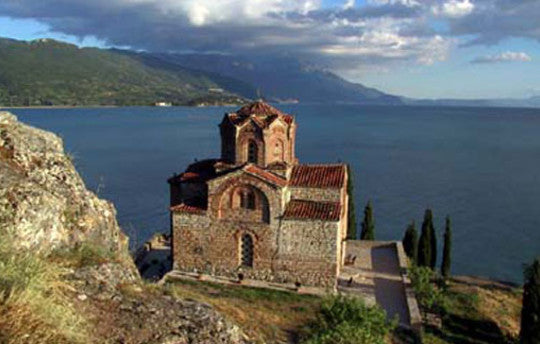Your Cart is Empty

Formerly a part of the Socialist Federal Republic of Yugoslavia, the Former Yugoslav Republic Of Macedonia (FYROM) is a small but musically rich country with unstoppable sounds and rhythms flowing from a prodigious mix of nationalities.
As is usually the case in southeastern Europe, the music of the towns differs considerably from that of the villages, but there is one thing they have in common - an extraordinary complexity of rhythm.
FYROM village music has seen a notable revival in the years since independence. Its quintessential instruments include the gajda bagpipe, the double-course tambura, a Balkan variant on the strummed string instrument, and the kaval flute.
A key influence on the sound of folk-pop bands is the traditional urban music performed by ?algija groups such as Kaldrma.
The popular narodni orkestri have a line-up of clarinet or saxophone, accordion, guitar, bass and drum kit, with synthesizers and drum machines becoming ever more common.
As well as the enormous body of folk song, sung in a simple drone-based polyphonic texture, FYROM has a thriving industry based on new arrangements of such songs. The late Vaska Ilieva was one of the best-loved performers not only of such arrangements, but also of slow ballads and newly composed songs.
The current scene of novokomponirana is dominated by Naum Petreski and the talented and versatile Suzana Spasovska.
The younger generation prefer the local turbofolk, which is harder-edged and draws on the rhythms of house and techno, often arriving close to a standard Europop idiom. Names to look out for here are Sonja Tarculovska and Elena Velevska.
The Gypsies are thought to have arrived in the Balkans about six hundred years ago, and they swiftly established themselves as skilled and adaptable musicians. In Macedonia, they form a substantial minority; the settlement of Šuto Orizari outside Skopje is the largest Roma town in the world.
The Gypsy typical orchestra today consists of a singer, backed by electric guitar, synth, drum kit, and maybe a saxophone or clarinet. Highly coloured, passionate, even erotic, the music may sound very Indian.
One of the most popular musics within Gypsy communities is tallava. It has become heavily electronic, with powerful vocals straining over a synthesizer drone, and the whole thing drenched in reverb and delay. Synthesizer, indeed, has become one of the favoured instruments, taking the place of the accordion, with specialist performers such as Amza.
A more traditional FYROM Gypsy style is associated with Stevo Teodosievski and his wife Esma Redžepova, whose powerful voice and vast repertoire make her the country’s most celebrated Gypsy performer.
A much more modern approach is employed by the classically trained clarinettist, saxophonist and composer Ferus Mustafov – arguably the greatest Macedonian virtuoso. His music is a fascinating fusion of Macedonian, Turkish and Gypsy influences and many of his tunes have become standards.
Brass bands are as much a part of the music scene as they are in Serbia. One with international renown is the Ko?ani Orkestar.